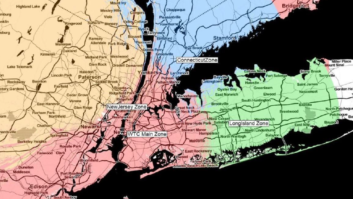In an opinion piece posted to Cincinnati’s WLW(AM) website Clear Channel’s Corporate PD Darryl Parks had strong statements about AM and the FCC’s revitalization proposals that were being worked on before the government shutdown.
(To view Parks’ original blog go here.)
Specifically, Parks was apparently referring to a proposal discussed at the recent Radio Show by Acting Chairwoman Mignon Clyburn.
Prior to his current position, Parks was PD at WLW from 1999–2010, according to the site.
The piece, now gone from the website, essentially suggested all of the commission’s proposals would increase, not reduce, interference and that nonviable AMs that clutter the band should be turned off, judging by the more than 30 comments still accessible.
“The ‘static’ you hear on AM radio is interference,” one commenter quoted Parks as saying. That particular commenter replied that AM static comes from several sources, including lightning strikes and electrical equipment, in addition to actual interference from other broadcast stations. “Still more interference comes from such sources as poorly-made receivers,” according to this commenter.
Summit Media Corp. CE Greg Hahn suggested that Parks misinterpreted the proposals. He explains that relaxing the community coverage standards has nothing to do with allowing more interference, “unless you are referring to interference in an area that is now out of the primary coverage area. But that’s always been the case. This is simply allowing the station to operate without necessarily covering their city of license at the previous minimum level,” he writes in his opinion.
SHK’s Paul Jellison writes “bravo, Darryl. There are laws of physics that cannot change even though the rule/law makers think they can rewrite them. Translators, while they may keep a station on life support, is a patch. Translators are secondary meaning they can be bumped off the air by a ‘real’ FM station.”
The AM band evolved from technology developed in the 1920s and 1930s, and is considered terribly flawed by today’s standards, according to Jellison, who also stresses that that is his personal opinion. “The station count should be cut in half or more and the AM band totally redesigned from the ground up. That is how to save AM. IMHO.”
This article has been updated.












